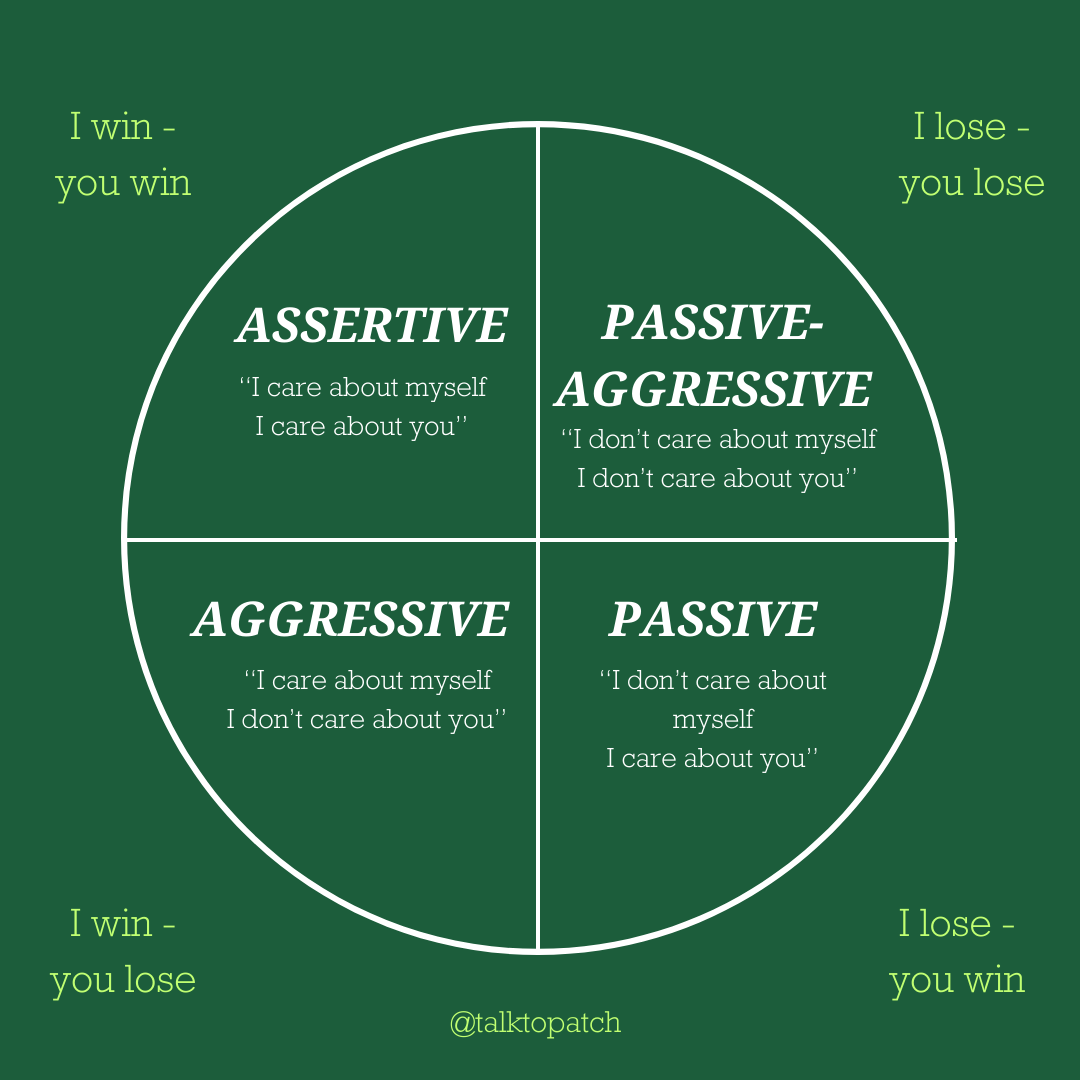How you communicate your anger
When it comes to the workplace, anger is everywhere, every day. Someone working harder than their co-worker can cause anger, a disrespectful client can cause anger, not getting a promotion can cause anger. You get the point. Anger is not bad for the workplace, nor is it bad in general. That said, it can be used generatively or it can be used destructively. For the record, not using or feeling your anger at all is also very, very destructive. Psst: no human on the planet doesn’t feel anger, they just stuff it, and it comes out sideways in some way or another.
Which of the four ways below do most frequently you relate to anger?
Aggressive
Expressing that only their needs, wants, and feelings matter. The other person is bullied and needs are ignored. Bulldozing. “Mean.”
Inappropriately honest
Poor emotional regulation, easily frustrated
Unwilling to compromise or own their part
Speak in loud, hostile way
Use of criticism, humiliation, domination
Frequently interrupts and doesn’t listen
Disrespectful towards others
“Violent” and scares audience
Passive Aggressive
A.k.a “anger in a tuxedo”. Will express anger by snubbing, witholding, banging pots, making “jokes”. Covertly mean.
Emotionally repressed and dishonest
Unclear, indirect, ineffective communication
Causes “fight/flight” in recipient, perhaps even the whole room, but leaves most confused and unclear what the other person wants
Nobody wins, everbody loses
Passive
Prioritizes the needs, wants, feelings of everyone else and at their own expense. Often these people are taken advantage of even by well intentioned people who simply don’t know this persons needs/wants. Too “nice”.
Emotionally repressed and dishonest
Soft-spoken, quiet, self-denying
Lacks confidence
Doesn’t know needs, prioritizes others’ needs over their own
Self-denying, self-blaming, apologetic
Can lead to explosions of anger
Assertive
Emphasizes the importance of both people’s needs. Person stands up for their own needs/wants/feelings, yet listens to others’. Confident and respectful. “Firm”.
Appropriately honest and firm, mature
Empathic and respectful to all involved
Deeply connected to own emotional state and that of the other
Clearly states wants, listens actively without interruption, compromising
Non-violent communication
“I” statements, good boundaries
